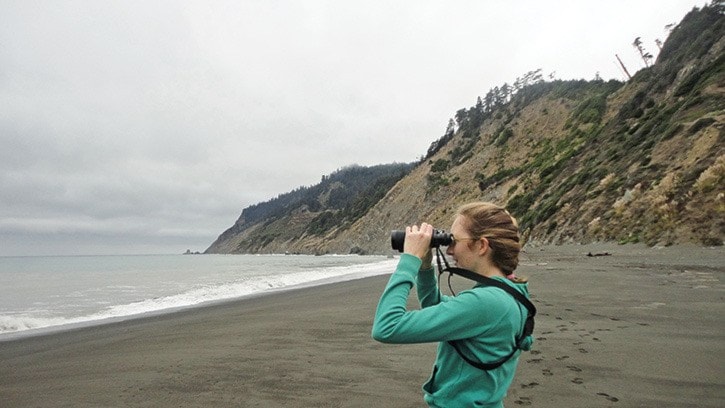By Lynda Hills
Metchosin-based Rocky Point Bird Observatory is migrating this weekend to co-host the International Migratory Bird Day at Beaver/Elk Lake Regional Park.
The international event has something for bird newbies and nerds alike. From the black-throated grey warbler and western meadowlark to the American goldfinch or even the simple, yet marvellous, warbling vireo, observers can find these and other birds making a whistle stop on Vancouver Island during their migratory journey.
“You see birds every day, but you don’t often get the chance to connect so closely with them,” says Bird Day co-ordinator and biologist, Penny Lancaster. “Migratory bird day provides that opportunity.”
A joint partnership between the Capital Regional District and the Victoria Natural History Society, the day includes such happenings as guided bird walks, bird-banding demonstrations, live birds of prey display and various children’s activities. This year’s theme is Restore Habitat, Restore Birds.
“Habitat loss is the leading cause of bird population decline,” says Lancaster. “Birds can’t live in condos, they need specialized eco-systems.”
The Rocky Point group is also offering extra value the next day at the regular Sunday guided bird walk at Outerbridge Park off Royal Oak Drive in Saanich. The event, starting at 9 a.m., will include a bird count circle, a photography contest and a live birds of prey display.
For Rocky Point master bird bander, Rick Schortinghuis, both days provide the opportunity for people to learn more about Metchosin’s bird observatory and also understand the value of preserving habitat.
“This area of the world is significant, as we get a lot of migrant birds here; tropical birds like warblers or tanagers, which come back year after year,” he says. If birds return and their nest area is gone, Schortinghuis adds, finding a new location adds unneeded stress to their sensitive systems.
He gives the example of the rufous hummingbird, a frequent visitor to Rocky Point and a species with the longest migratory route in relation to its size.
“The rufous hummingbird travels from Vancouver Island all the way down to Mexico,” he says. “On one occasion we banded a female and recorded her return eight years later to the same neighbourhood.”
Birds provide a myriad of ecosystem services, such as insect control and pollination. And because of their sensitive biology, they are the first impacted by environmental change.
Schortinghuis notes the central aim for migratory bird day is linking people to birds.
“I love to see the excitement on children’s faces when they hold a hummingbird in their hand,” he says. “One moment the bird is still, and the next moment it explodes into flight – when that happens, it’s hard to replicate that wonder in a child’s eyes.”
Saturday’s event runs from 9 a.m. to 1 p.m., with guided bird walks at 9:15 and 10:30 a.m. from the Beaver Lake Nature House. More information about Rocky Point Bird Observatory and International Migratory Bird Day can be found at rpbo.org.
editor@goldstreamgazette.com
